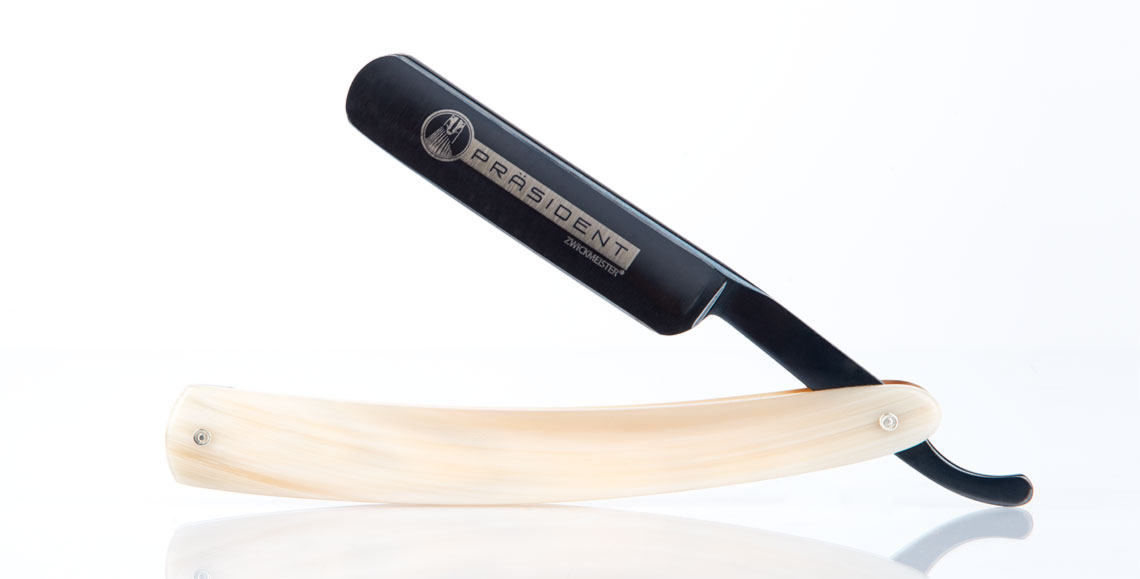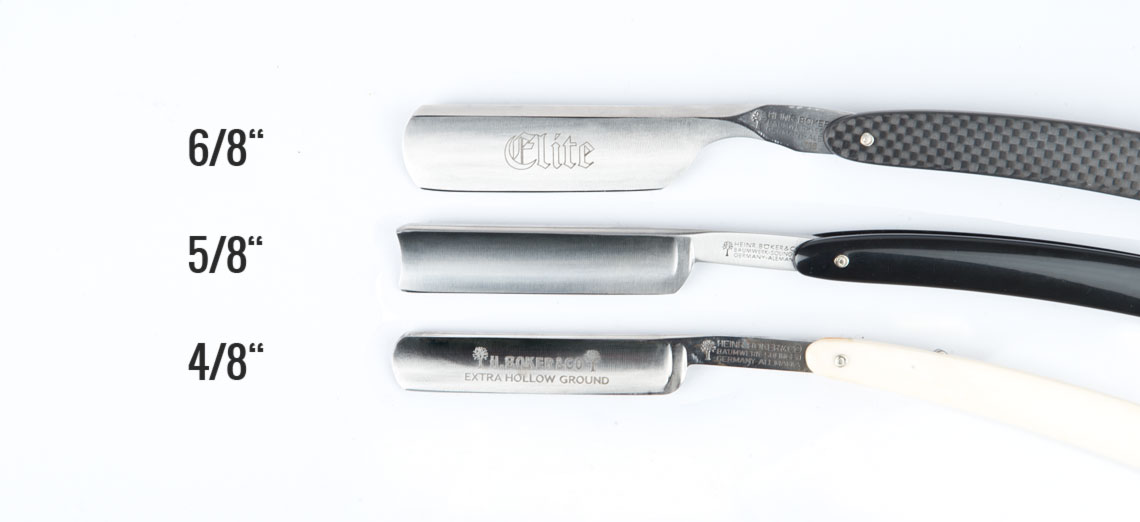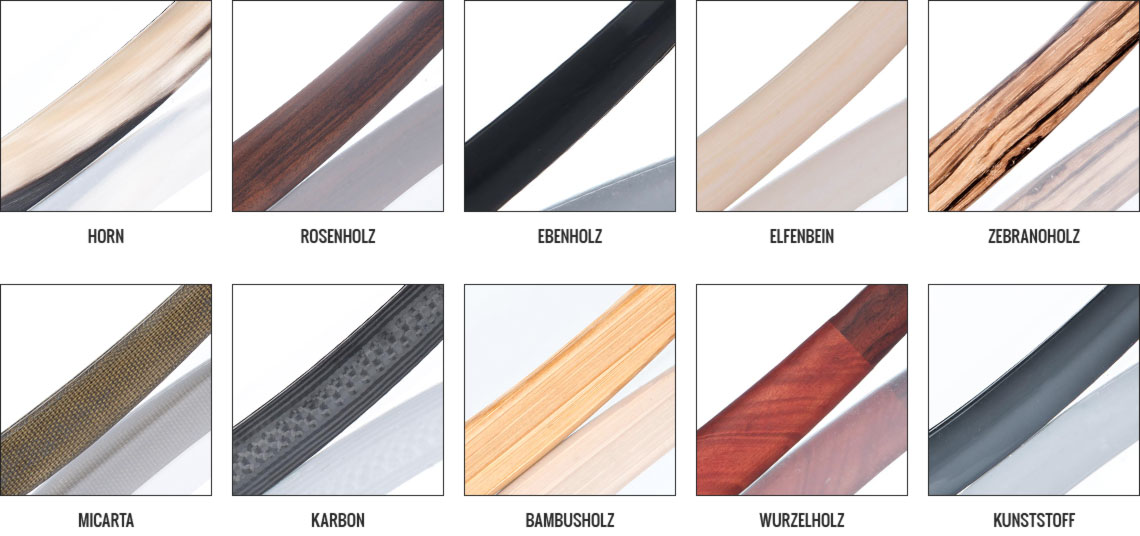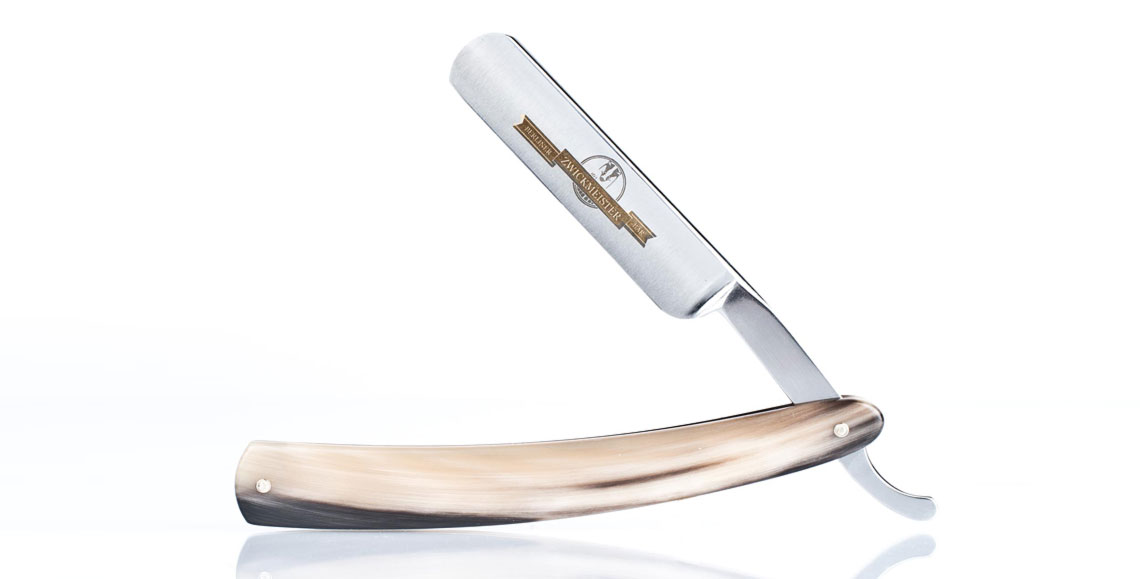A beginner"™s guide to a "straight" razor
1st Decision: Blade Material
Which blade material should I choose?Choose between a rust-proof stainless steel blade or a carbon steel blade.
In brief, it is normally advisable to choose a carbon steel blade. Carbon blades sharpen more efficiently and therefore give a sharper edge. That is unless you normally shave in a "sauna" or you work as a sea captain, in which case choose a stainless steel blade.

In more detail: Carbon steel is made of iron and 0.5% to 1.4 % of carbon. To make iron rust-proof components of chrome and nickel are added. These safeguard the steel from exterior influences like corrosion.
It is always preferable, if a material is predominantly used in a humid environment, like a bathroom, that the material is rust proof . But the disadvantage of stainless steel is that it does not maintain the "edge" of the blade well and also stainless steel does not sharpen very efficiently.
Only the very specific structure of carbon allows blades to reach the hardness and sharpness of a 65 Rockwell, providing at the same time a high grade of flexibility.
In fact the edge of a carbon steel blade is so thin that it adjusts to every contour of your face. To check the flexibility of a carbon steel blade, press the blade onto your thumbnail and see how easily it bends.
Soligen only use open razors with a minimum hardness of 58HRC.
A blade made out of carbon requires more care than a stainless steel blade. Carbon blades should always be dried immediately after use and if not used frequently should be rubbed with a drop of oil.
2nd Decision: Blade size
Traditionally the width of a blade is given in inches.Nowadays there is a wide range of sizes available. These range from 3/8" to 6/8". The standard length of a blade is 7cm (3 inches).
As a general rule, "the bigger the guy, the bigger the blade". A wider blade covers a bigger surface area and is comfortable to hold whilst a slimmer blade is excellent for trimming contour lines.

However, the differences are not that marked. A client preferring a delicate tool should look at the 4/8" blade and a client who prefers more weight in his hand should opt for a 6/8" blade.
In general Slimmer blades like 3/8" ones are for professional use and for accurate contour shaving. If in doubt, opt for a 5/8" inch blade.
3rd Decision: Handle
Because straight razors are exposed to water, shaving foam, aftershave and other "influences" ensure you choose a robust material for the handle.Whether you choose wood, horn or a composite, the rule is whatever catches your eye is allowed. None of the above mentioned type of handles have any disadvantages.

4th Decision: The Razor Head
With the recent "renaissance" of straight razors comes a great choice for razor heads.The most classical is the round point razor head. This is ideal for all types of shaving and there is less possibility of injury if dropped.

There are also sharp point razor heads, Turkish, Spanish and Wiener razor heads.Their disadvantage is the high risk of injury if dropped on to your foot.
For trimming contour lines a sharp point is the better choice. For all other shavings the round point is your best bet.
Step 5: The Make
All straight razors made by Solingen guarantee quality. We therefore recommend buying a Zwickmeister straight razor made in Solingen.





